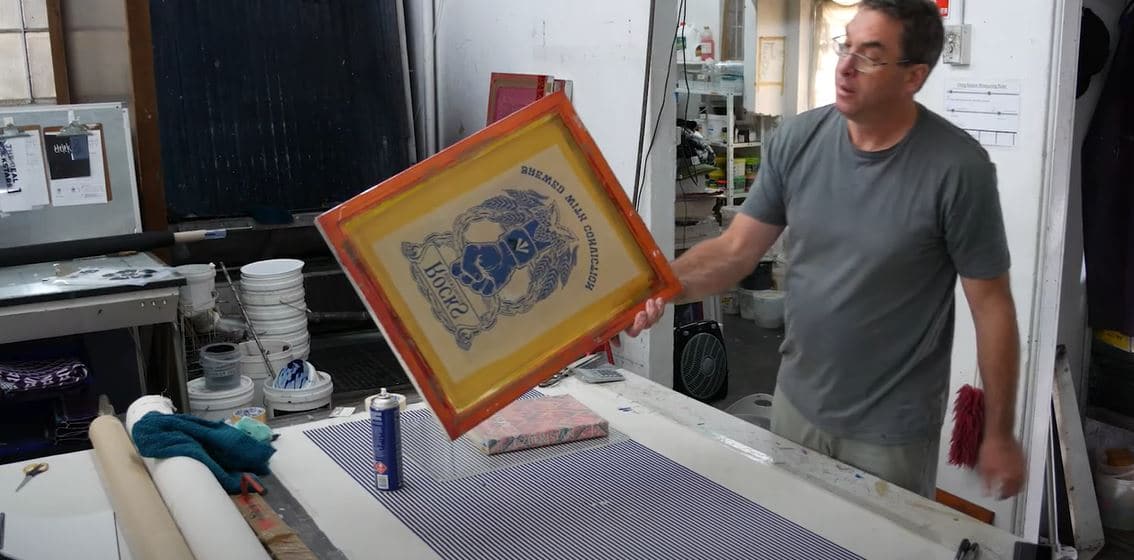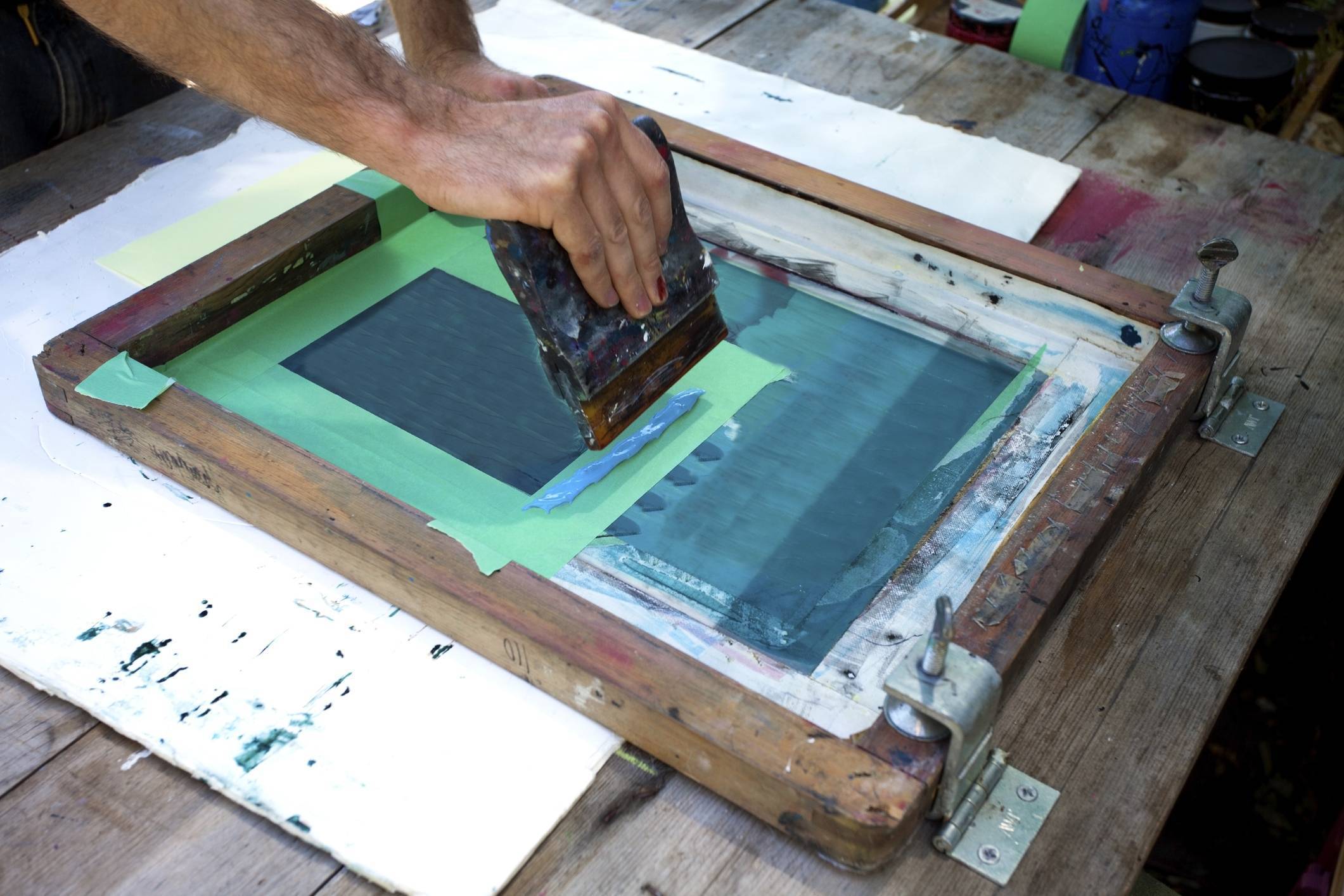7 expert-approved design tips for T-Shirt Printing that sell
Wiki Article
From Design to Delivery: Grasping the Art of T-Shirt Screen Printing
The journey from layout to distribution in t-shirt screen printing includes a collection of essential stages that require attention to information and calculated planning. It begins with comprehending the subtleties of your target market, complied with by the option of proper products and the preparation of artwork that fulfills high criteria. As the procedure unravels, obstacles in high quality control and logistics can occur, potentially affecting the final outcome. Checking out these complexities reveals not only the intricacies of screen printing but additionally the important practices that can raise a brand name's standing in an open market.Understanding T-Shirt Screen Printing
Understanding T-Shirt screen printing includes acknowledging a functional and commonly used technique for moving styles onto textile. This technique utilizes a mesh and a pattern screen to use ink onto various fabric products, primarily cotton and polyester blends. The procedure begins with the development of a screen that includes the desired design, which is after that meticulously aligned on the textile.Ink is pushed through the screen's open locations making use of a squeegee, enabling for exact application of shade. This approach is preferred for its capacity to produce dynamic, lasting prints that hold up well to cleaning and wear. In addition, screen printing can accommodating both simple and intricate layouts, making it a recommended option for personalized garments, advertising items, and even imaginative works.
Screen printing uses scalability, making it ideal for both little set orders and large-scale manufacturings. While initial configuration expenses might be greater contrasted to various other printing methods, the effectiveness and resilience of screen printing often warrant the investment. Generally, understanding the fundamentals of Tee shirts screen printing is essential for any individual looking to participate in this preferred form of fabric design, whether for individual projects or business undertakings.
Conceiving Your Style
Conceiving your style is a crucial step in the Tees screen printing procedure, as it establishes the structure for the whole project (Screen Printing). This phase involves producing concepts that reverberate with your target market while making certain that the design aligns with the brand's identification and message. It is necessary to begin by checking out styles, color plans, and graphics that show the intended visualSketching preliminary ideas can be valuable, enabling a graph of ideas before settling the layout. Consider making use of typography, imagery, and design in such a way that captures interest and connects efficiently. On top of that, it is essential to anticipate the printing strategy that will be utilized, as this can affect layout intricacy and color options.
Taking part in conceptualizing sessions with group participants or seeking responses from possible consumers can also enhance the conceptualization procedure, supplying diverse viewpoints that fine-tune the layout. Inevitably, a well-balanced design not only enhances the visual appeal of the T-shirt yet additionally promotes a link with the target market, driving passion and potential sales. Therefore, devoting time to conceive your layout can result in an effective screen printing result.
Selecting the Right Materials

The weight of the fabric, normally determined in grams per square meter (GSM), affects the drape and total feeling of the Tees. Heavier fabrics might supply a much more exceptional appearance, while lighter alternatives fit for casual wear. Structure also contributes; smoother fabrics often tend to yield sharper prints, while textured surface areas can develop special aesthetic effects.
In addition, consider the environmental impact of materials. Organic cotton and recycled polyester are obtaining popularity amongst eco-conscious customers. Inevitably, choosing the best materials entails stabilizing aesthetic allure, capability, and sustainability, making sure that the Tee shirts not just looks wonderful but likewise satisfies the assumptions of your target market.
Preparing Artwork for Printing
Preparing artwork for T-shirt screen printing calls for cautious focus to detail to guarantee that the final print accurately mirrors the desired layout. The very first step is to develop a This Site high-resolution electronic documents, preferably in vector style, as this permits scalability without loss of quality. Usual software program made use of for this purpose consists of Adobe Illustrator and CorelDRAW.Next, verify that all message is converted to outlines or rasterized to prevent font problems during printing (Abilene T-Shirt Screen Printing Company). Furthermore, it is essential to validate that the shade mode is set to CMYK, as this lines up with the printing process. Pay close attention to color matching; utilizing Pantone colors can help accomplish uniformity across various prints
Take into consideration the dimensions of the print location and maintain proper margins to prevent design cutoff. It's additionally a good idea to consist of registration marks for alignment during the printing procedure. T-Shirt Printing. Finally, request a proof from the printer to envision the last product before mass production. This step is necessary for identifying any possible problems, assuring that the published Tee shirts satisfies the desired quality and layout specifications. Correct prep work of artwork substantially influences the general success of the screen printing project
Grasping the Printing Process
Mastering the printing procedure is essential for achieving high-quality lead to Tees screen printing. This stage includes several significant actions that directly influence the last product. The primary step is establishing the printing machine properly. Proper enrollment of screens guarantees that colors straighten appropriately, protecting against misprints and guaranteeing an expert appearance.
Next off, choosing the right ink is important. Different ink kinds, such as plastisol or water-based, offer different coatings and sturdiness. Understanding the fabric composition of the T-shirt likewise aids in choosing suitable inks.
When it pertains to the actual printing, regulating the squeegee pressure and angle is essential. Constant pressure will produce even ink distribution, while the angle affects the flow and coverage. In addition, changing the rate of the printing press can influence the ink's healing process, which is essential for ensuring sturdiness.
Quality Assurance and Finishing
After the printing process is complete, applying effective top quality control measures becomes essential to verify that each Tees satisfies the desired requirements. Quality assurance involves an organized method to evaluating each garment for defects, verifying that the print high quality, shade accuracy, and fabric integrity align with the specifications set during the layout stage.
The very first step in quality control is a thorough visual assessment. This entails monitoring for usual problems such as misalignment, ink smudges, or fading. Any T-shirt that does not meet the top quality criteria need to be addressed without delay, either through reprinting or fixing.
Along with visual checks, it is essential to carry out laundry tests on a sample of printed tee shirts to evaluate the toughness of the inks and the general longevity of the design. These examinations aid confirm that the print will preserve its vibrancy and stability after several laundries, a vital variable for consumer complete satisfaction.
Completing touches, such as thread trimming and the application of treatment labels, additionally play a significant duty in quality assurance - T-Shirt Printing. By focusing on these facets, businesses can enhance the total discussion of their items, eventually causing an extra satisfying customer experience
Product Packaging and Distribution Solutions

To attain perfect product packaging, think about using green materials that align with sustainability trends, such as recyclable poly bags or biodegradable boxes. Each Tee shirts need to be neatly folded and positioned in protective covering to stop creasing and possible damages throughout transportation. Consisting of a well-known insert or care instructions can additionally personalize the experience, promoting customer loyalty.
When it involves distribution, selecting a dependable shipping companion is important. Review choices based upon price, monitoring, and rate capabilities. Offering numerous delivery approaches can cater to different consumer needs, from typical to expedited shipping.
Often Asked Questions
What Are the Common Mistakes Beginners Make in Screen Printing?
Common blunders beginners make in screen printing include inappropriate screen preparation, inadequate ink blending, inaccurate exposure times, insufficient curing, and neglecting to test prints. These mistakes can result in low quality and poor results in last products.Just How Can I Protect Against Ink From Blood Loss During Printing?
To stop ink bleeding throughout printing, warranty correct screen tension, use suitable emulsion density, choose the appropriate ink uniformity, keep ideal treating temperature levels, and stay clear of overwhelming the screen with extreme ink throughout application.What Kinds of Inks Are Best for Various Fabrics?
Selecting inks based upon fabric kind is important. Water-based inks are suitable for cotton, offering softness. Plastisol inks match artificial textiles, using durability. Release inks effectively mix with all-natural fibers, guaranteeing dynamic colors without jeopardizing material stability.Exactly how Do I Select the Right Screen Mesh Matter?
Picking the appropriate screen mesh count depends upon the preferred print detail and ink type. Custom T-Shirt Design & Printing Texas. Higher mesh matters generate finer details, while lower counts facilitate thicker inks. Evaluate material kind and design complexity for excellent resultsCan I Make Use Of Screen Printing for Little Set Orders?
Yes, screen printing can be successfully used for small set orders. This approach enables top quality outcomes and thorough layouts, making it a sensible choice for custom apparel, marketing products, or restricted version runs.Recognizing T-Shirt screen printing entails recognizing a flexible and extensively used technique for transferring styles onto material. While preliminary arrangement prices might be greater contrasted to various other printing techniques, the efficiency and durability of screen printing often justify the investment. Preparing art work for T-shirt screen printing calls for mindful interest to information to assure that the final print accurately reflects the intended style. Understanding the printing procedure is important for attaining top quality results in T-shirt screen printing. Typical errors newbies make in screen printing include inappropriate screen preparation, insufficient ink blending, inaccurate direct exposure times, inadequate healing, and neglecting to check prints.
Report this wiki page